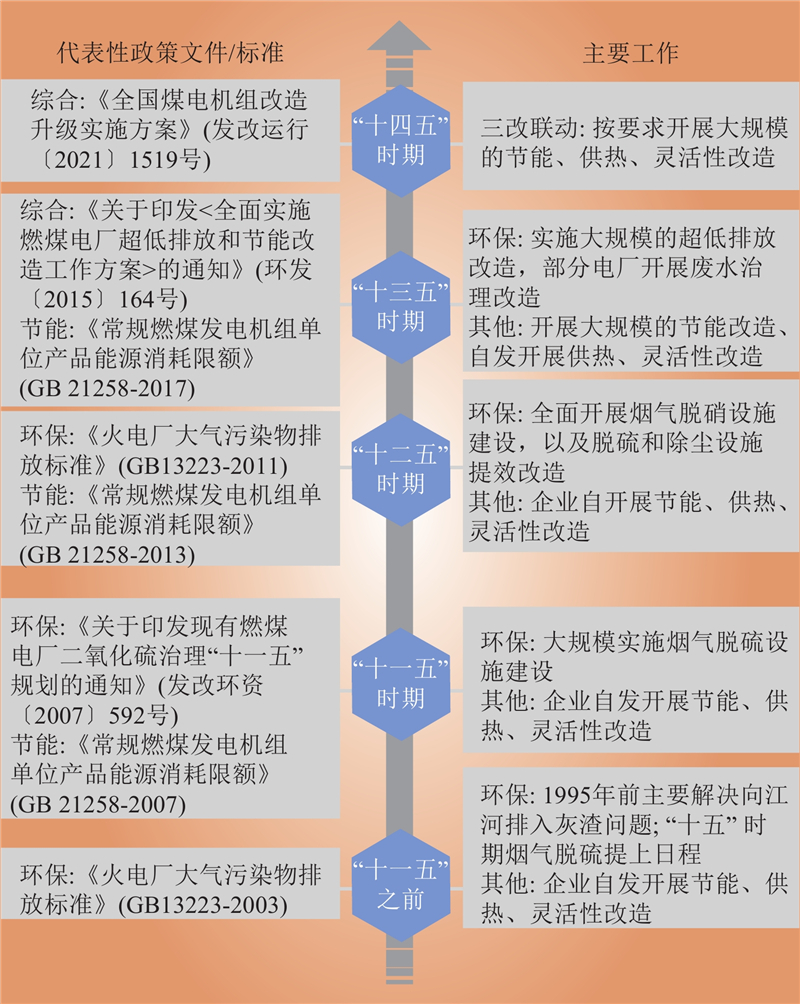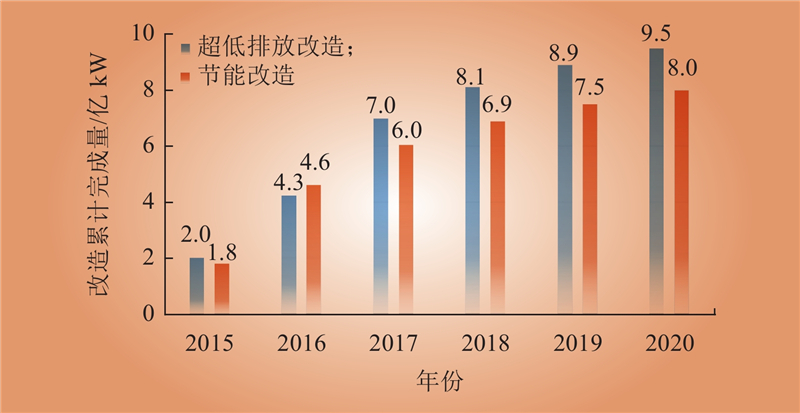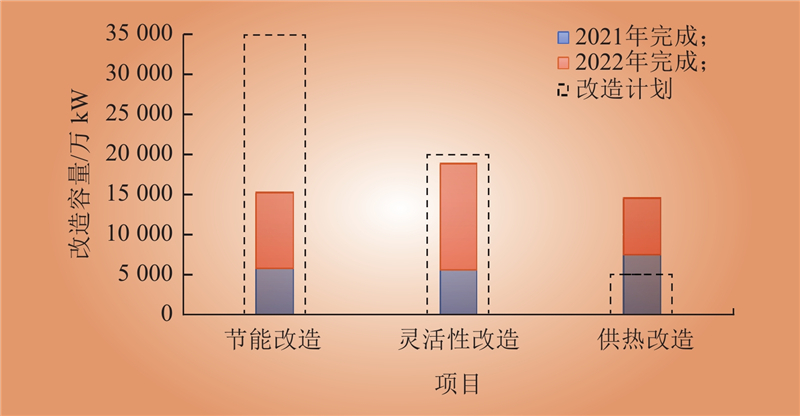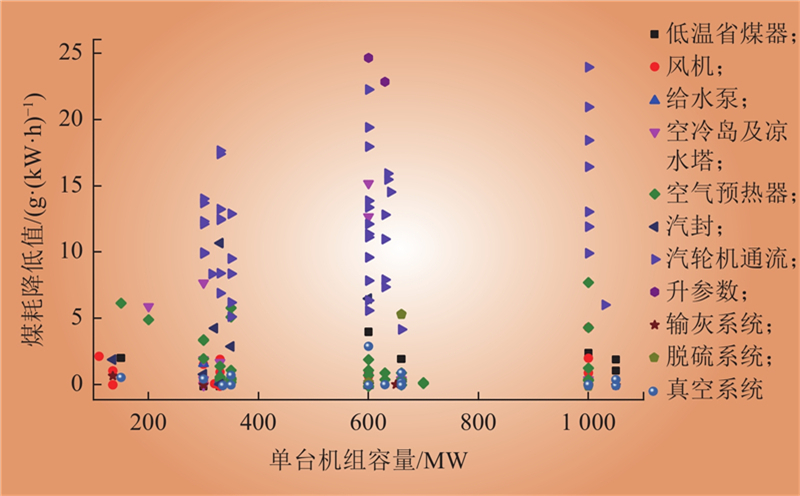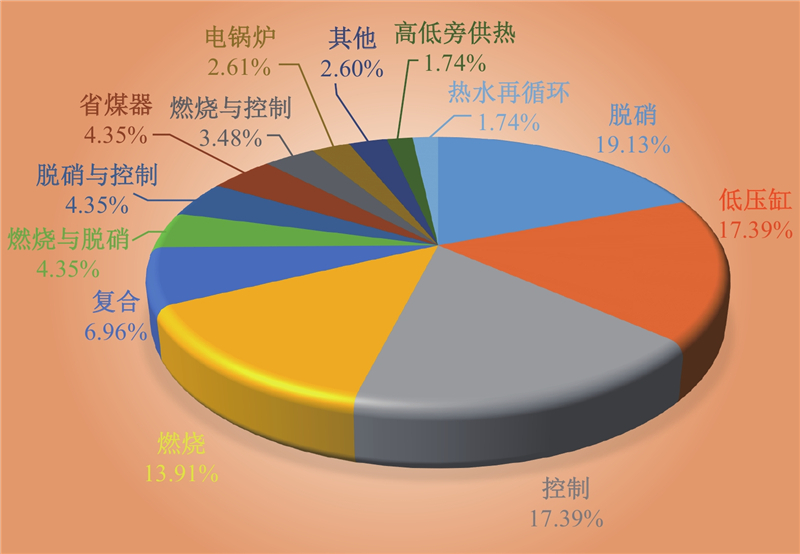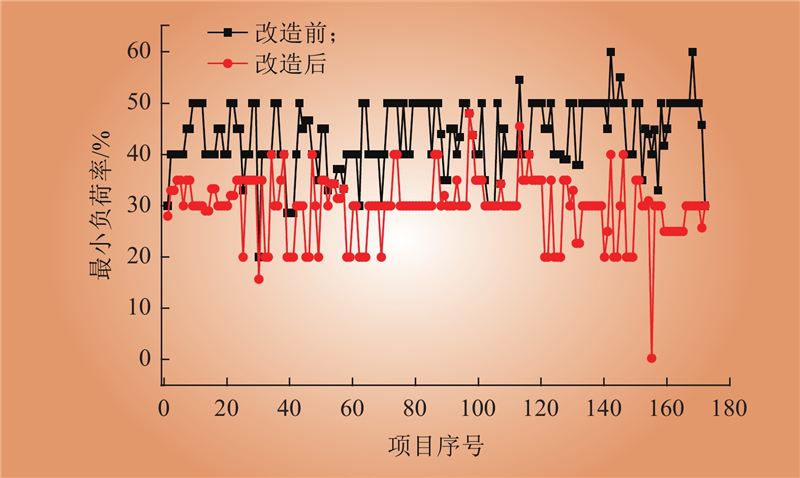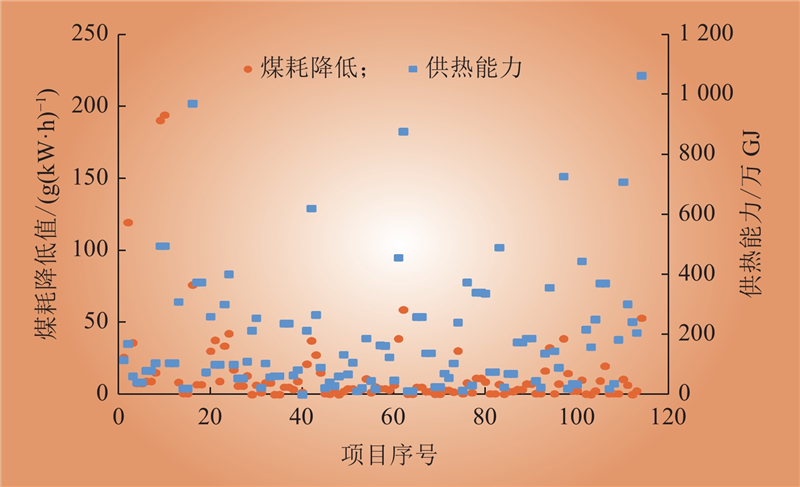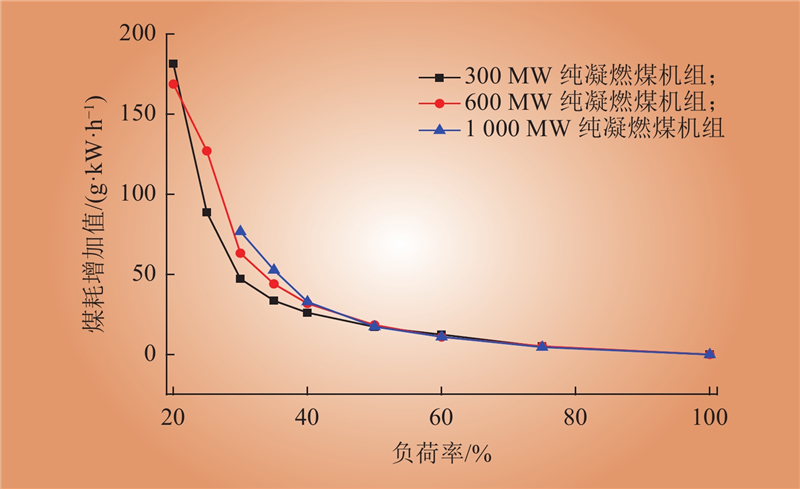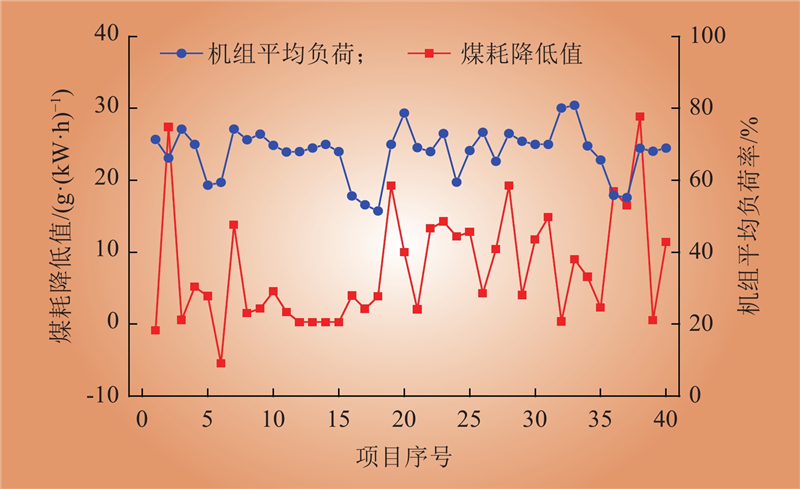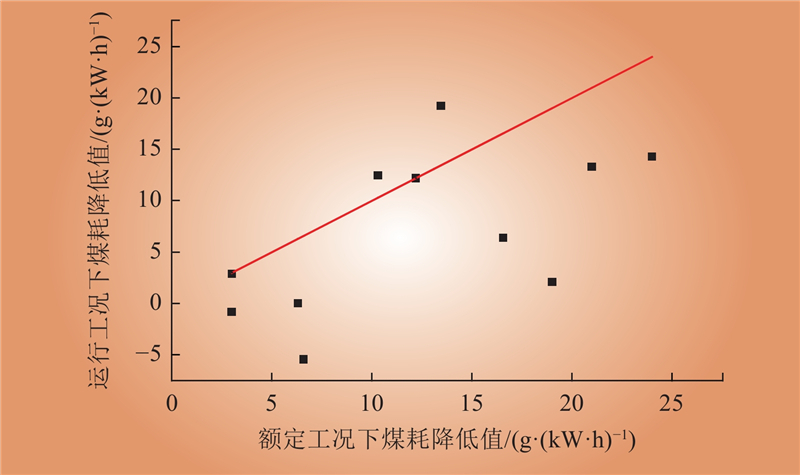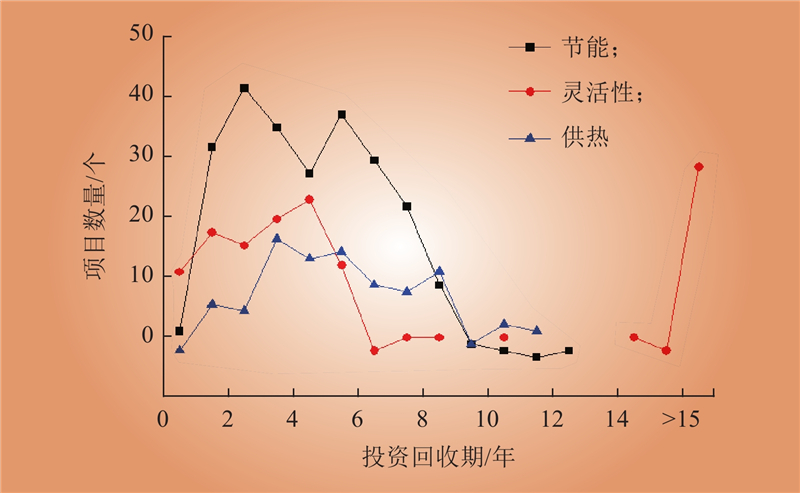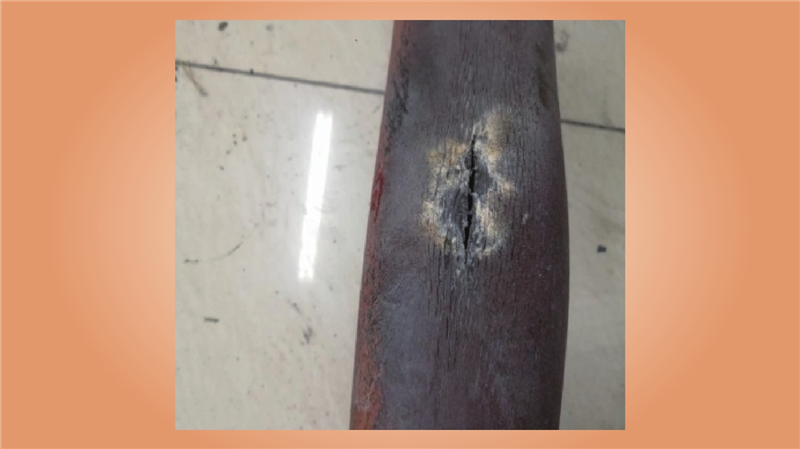| 1 |
中国电力企业联合会. 煤电机组改造升级情况调研报告[R]. 北京: 中国电力企业联合会, 2023.
|
| 2 |
王志轩. “双碳” 目标下煤电产业科学发展的思考[J]. 中国煤炭, 2022, 48 (9): 10- 17.
DOI
|
|
WANG Zhixuan. Thoughts on the scientific development of coal-electricity industry under the carbon peak and carbon neutrality goals[J]. China Coal, 2022, 48 (9): 10- 17.
DOI
|
| 3 |
刘志强, 叶春, 张源, 等. 煤电“三改联动” 实施分析与措施建议[J]. 热力发电, 2023, 52 (5): 154- 159.
|
|
LIU Zhiqiang, YE Chun, ZHANG Yuan, et al. Analysis and suggestions on the implementation of "three-renovation" of coal-fired power[J]. Thermal Power Generation, 2023, 52 (5): 154- 159.
|
| 4 |
帅永, 赵斌, 蒋东方, 等. 中国燃煤高效清洁发电技术现状与展望[J]. 热力发电, 2022, 51 (1): 1- 10.
|
|
SHUAI Yong, ZHAO Bin, JIANG Dongfang, et al. Status and prospect of coal-fired high efficiency and clean power generation technology in China[J]. Thermal Power Generation, 2022, 51 (1): 1- 10.
|
| 5 |
刘志强, 赵毅, 潘荔. 中外火电节能减排效率分析与比较[J]. 热力发电, 2021, 50 (3): 9- 18.
|
|
LIU Zhiqiang, ZHAO Yi, PAN Li. Analysis and comparison of energy saving efficiency and emission reduction efficiency of thermal power between China and foreign countries[J]. Thermal Power Generation, 2021, 50 (3): 9- 18.
|
| 6 |
刘志强, 潘荔, 赵毅, 等. “十四五” 时期我国火电行业节能潜力分析与建议[J]. 中国能源, 2021, 43 (4): 12- 18, 45.
DOI
|
|
LIU Zhiqiang, PAN Li, ZHAO Yi, et al. Analysis and suggestions of "14th five-year plan" thermal power industry energy conservation potential in China[J]. Energy of China, 2021, 43 (4): 12- 18, 45.
DOI
|
| 7 |
袁洪利. 超临界600 MW等级汽轮机升参数通流改造及性能评价[J]. 东方汽轮机, 2019, (1): 21- 26.
|
|
YUAN Hongli. Parameter raising flow path optimization and performance evaluation of supercritical 600 MW turbines[J]. Dongfang Turbine, 2019, (1): 21- 26.
|
| 8 |
冉燊铭, 郑刚, 邓坚, 等. 基于升参数的亚临界W火焰锅炉整体提效改造方案研究[J]. 热力发电, 2022, 51 (1): 79- 86.
|
|
RAN Shenming, ZHENG Gang, DENG Jian, et al. Study on overall efficiency improvement scheme for subcritical W-flame boiler based on lifting parameters[J]. Thermal Power Generation, 2022, 51 (1): 79- 86.
|
| 9 |
张磊, 张俊杰, 冯立国, 等. 亚临界600 MW汽轮机通流改造技术方案研究与应用[J]. 中国电力, 2018, 51 (4): 89- 95.
|
|
ZHANG Lei, ZHANG Junjie, FENG Liguo, et al. Research and application of flow path retrofit upgrade of the subcritical 600 MW turbine in Ninghai power plant[J]. Electric Power, 2018, 51 (4): 89- 95.
|
| 10 |
刘爱国, 张健赟, 赵树成, 等. 300MW和600MW等级汽轮机通流改造经济性研究[J]. 能源工程, 2021, (6): 69- 73.
|
|
LIU Aiguo, ZHANG Jianyun, ZHAO Shucheng, et al. Economic study on flow passage retrofits of 300 MW-class and 600 MW-class steam turbines[J]. Energy Engineering, 2021, (6): 69- 73.
|
| 11 |
关志生. 京津唐电网锅炉调峰现状及问题探讨[J]. 华北电力技术, 1994, (10): 6- 10.
|
| 12 |
刘福阁. 陡河发电厂国产200MW机组深度调峰经验介绍[J]. 河北电力技术, 1994, 13 (6): 66- 70.
|
| 13 |
卢勇振. 新形势下煤电机组灵活性改造技术研究[J]. 锅炉技术, 2022, 53 (6): 72- 76, 80.
DOI
|
|
LU Yongzhen. Research on the flexibility modification technology of coal power units under the new situation[J]. Boiler Technology, 2022, 53 (6): 72- 76, 80.
DOI
|
| 14 |
张海楠. 燃煤机组灵活性改造技术路线分析[J]. 东北电力技术, 2022, 43 (11): 17- 19, 22.
DOI
|
|
ZHANG Hainan. Analysis of the technical route of flexibility transformation of coal-fired units[J]. Northeast Electric Power Technology, 2022, 43 (11): 17- 19, 22.
DOI
|
| 15 |
陈辉, 张佳佳, 戴维葆, 等. 330 MW机组SCR脱硝系统灵活性优化改造技术研究[J]. 电站系统工程, 2020, 36 (4): 12- 16.
|
|
CHEN Hui, ZHANG Jiajia, DAI Weibao, et al. Research on flexibility optimal transformation technology of SCR system of 350MW unit[J]. Power System Engineering, 2020, 36 (4): 12- 16.
|
| 16 |
巩李明, 邓启刚, 刘杰, 等. 东方350 MW超临界CFB锅炉灵活性改造技术研究[J]. 节能, 2021, 40 (8): 39- 41.
DOI
|
|
GONG Liming, DENG Qigang, LIU Jie, et al. Research on flexibility transformation technology of Dongfang 350 MW supercritical CFB boiler[J]. Energy Conservation, 2021, 40 (8): 39- 41.
DOI
|
| 17 |
王伟, 陈钢, 常东锋, 等. 超级电容辅助燃煤机组快速调频技术研究[J]. 热力发电, 2020, 49 (8): 111- 116.
|
|
WANG Wei, CHEN Gang, CHANG Dongfeng, et al. Super capacitor aided fast frequency modulation technology of coal-fired unit[J]. Thermal Power Generation, 2020, 49 (8): 111- 116.
|
| 18 |
白涛, 靳智平. 基于烟气余热回收的热泵供热系统热力学分析[J]. 电力学报, 2023, 38 (2): 117- 126.
|
|
BAI Tao, JIN Zhiping. Thermodynamic analysis of heat pump heating system based on flue gas waste heat recovery[J]. Journal of Electric Power, 2023, 38 (2): 117- 126.
|
| 19 |
李建锋, 马庆中, 黄海涛, 等. 吸收式热泵在供热机组中的应用分析[J]. 中国电力, 2013, 46 (4): 25- 27, 31.
DOI
|
|
LI Jianfeng, MA Qingzhong, HUANG Haitao, et al. Analysis on absorption heat pump in heating units[J]. Electric Power, 2013, 46 (4): 25- 27, 31.
DOI
|
| 20 |
李建锋, 吕俊复, 冷杰, 等. 不同供暖模式的能效比较[J]. 暖通空调, 2017, 47 (10): 49- 54, 48.
|
|
LI Jianfeng, LÜ Junfu, LENG Jie, et al. Energy efficiency comparison of different heating modes[J]. Heating Ventilating & Air Conditioning, 2017, 47 (10): 49- 54, 48.
|
| 21 |
刘学, 胡刚刚, 李健, 等. 高背压双抽热电联产机组联合运行特性及负荷分配[J]. 中国电力, 2022, 55 (10): 219- 228.
|
|
LIU Xue, HU Ganggang, LI Jian, et al. Operation characteristics and load distribution of CHP units with extraction-condensate and extraction-high back pressure mode[J]. Electric Power, 2022, 55 (10): 219- 228.
|
| 22 |
张尤俊, 戈志华, 庞敬帅, 等. 集成蒸汽引射器热电联产余热供热系统全工况性能分析[J]. 动力工程学报, 2023, 43 (3): 380- 390.
|
|
ZHANG Youjun, GE Zhihua, PANG Jingshuai, et al. Performance analysis of the cogeneration waste heat heating system integrated with a steam ejector under full conditions[J]. Journal of Chinese Society of Power Engineering, 2023, 43 (3): 380- 390.
|
| 23 |
李祥勇, 吴昕, 庞春凤, 等. 两种灵活性改造技术的热电特性对比研究[J]. 中国电力, 2023, 56 (4): 192- 200.
|
|
LI Xiangyong, WU Xin, PANG Chunfeng, et al. Comparative study of thermoelectric characteristics of two flexibility transformation technologies[J]. Electric Power, 2023, 56 (4): 192- 200.
|
| 24 |
侯建军, 付喜亮, 李染生, 等. 基于㶲分析的能量梯级利用供热变工况运行优化研究[J]. 中国电力, 2023, 56 (8): 230- 240.
|
|
HOU Jianjun, FU Xiliang, LI Ransheng, et al. Research on operation optimization of energy cascade utilization heating based on exergy analysis[J]. Electric Power, 2023, 56 (8): 230- 240.
|
| 25 |
史鹏飞, 康朝斌, 王书超, 等. 某600 MW超临界空冷燃煤机组深度调峰运行热经济性研究[J]. 电力科技与环保, 2023, 39 (2): 147- 156.
|
|
SHI Pengfei, KANG Chaobing, WANG Shuchao, et al. Study on thermal economy of a 600 MW supercritical air-cooled coal-fired unit for deep peak regulating operation[J]. Electric Power Technology and Environmental Protection, 2023, 39 (2): 147- 156.
|
| 26 |
丛星亮, 谢红, 苏阳, 等. 660 MW超超临界二次再热机组深度调峰试验研究[J]. 华电技术, 2021, 43 (5): 64- 69.
|
|
CONG Xingliang, XIE Hong, SU Yang, et al. Experimental study on deep peak-load shaving of a 660 MW ultra-supercritical secondary reheating unit[J]. Huadian Technology, 2021, 43 (5): 64- 69.
|
| 27 |
刘福国, 蒋学霞, 李志. 燃煤发电机组负荷率影响供电煤耗的研究[J]. 电站系统工程, 2008, 24 (4): 47- 49.
DOI
|
|
LIU Fuguo, JIANG Xuexia, LI Zhi. Investigation on affects of generator load on coal consumption rate in fossil power plant[J]. Power System Engineering, 2008, 24 (4): 47- 49.
DOI
|
| 28 |
李建锋, 吕俊复, 论立勇, 等. 燃煤热电联产机组性能评价方法研究[J]. 中国科学: 技术科学, 2017, 47 (1): 60- 70.
DOI
|
|
LI Jianfeng, LYU Junfu, LUN Liyong, et al. Calculation method research of power supply coal consumption of coal-fired cogeneration unit[J]. Scientia Sinica (Technologica), 2017, 47 (1): 60- 70.
DOI
|
| 29 |
王卫良, 王玉召, 吕俊复, 等. 大型燃煤电站锅炉能效评价与节能分析[J]. 中国电力, 2020, 53 (4): 177- 185.
|
|
WANG Weiliang, WANG Yuzhao, LYU Junfu, et al. Energy efficiency assessment of large capacity coal-fired boiler based on exergy analysis[J]. Electric Power, 2020, 53 (4): 177- 185.
|
| 30 |
陈明, 王晓翠, 杨荣涛. 1000MW机组深度调峰期间典型问题分析和解决方法[J]. 锅炉技术, 2021, 52 (4): 49- 55.
DOI
|
|
CHEN Ming, WANG Xiaocui, YANG Rongtao. Analysis and solution of typical problems during deep peak load regulation of 1000MW thermal power unit[J]. Boiler Technology, 2021, 52 (4): 49- 55.
DOI
|
| 31 |
李建锋, 周宏, 吕俊复. 中国1000MW等级火力发电机组可靠性分析[J]. 中国电力, 2017, 50 (11): 1- 7.
|
|
LI Jianfeng, ZHOU Hong, LÜ Junfu. Reliability analysis of 1 000 MW thermal power generating units in China[J]. Electric Power, 2017, 50 (11): 1- 7.
|
| 32 |
高瑞阳, 王新宝, 高娴, 等. 考虑灵活性资源和多能共享的低碳区域综合能源系统联盟-配电网博弈优化调度[J]. 南方电网技术, 2024, 18 (2): 77- 88.
|
|
GAO Ruiyang, WANG Xinbao, GAO Xian, et al. Optimal dispatching of low-carbon regional integrated energy system alliance and distribution network game considering flexible resources and multi energy sharing[J]. Southern Power System Technology, 2024, 18 (2): 77- 88.
|
| 33 |
王一清, 沙倩, 刘秋林. 区域综合能源系统接入的配电网扩展规划研究[J]. 电力科学与技术学报, 2023, 38 (6): 198- 205.
|
|
WANG Yiqing, SHA Qian, LIU Qiulin. Research on distribution network expansion planning for regional integrated energy system access[J]. Journal of Electric Power Science and Technology, 2023, 38 (6): 198- 205.
|
| 34 |
席佳铭, 孙亮, 葛沛然, 等. 考虑电热需求响应的光热-电热综合能源系统源荷协调经济调度[J]. 东北电力大学学报, 2023, 43 (3): 61- 71.
|
|
XI Jiaming, SUN Liang, GE Peiran, et al. Source-charge coordinated economic dispatching of Photothermal-electrothermal integrated energy system considering electric heating demand response[J]. Journal of Northeast Electric Power University, 2023, 43 (3): 61- 71.
|
| 35 |
李建锋, 杨革新, 吕俊复, 等. 电厂循环水与热泵耦合供暖能效分析[J]. 太阳能学报, 2019, 40 (8): 2289- 2298.
|
|
LI Jianfeng, YANG Gexin, LYU Junfu, et al. Energy efficiency analysis of circulating water of power plant and heat pump coupling heating[J]. Acta Energiae Solaris Sinica, 2019, 40 (8): 2289- 2298.
|
| 36 |
曹祎, 张莉, 郭静, 等. 基于大语言模型的低碳电力市场发展应用前景[J]. 智慧电力, 2024, 52 (2): 8- 16.
|
|
CAO Yi, ZHANG Li, GUO Jing, et al. Prospects for development of low-carbon electricity markets based on large language models[J]. Smart Power, 2024, 52 (2): 8- 16.
|
| 37 |
刘颖杰, 陈红坤, 田圆, 等. 基于投资组合高阶矩分析的电力系统灵活性评估[J]. 电力系统保护与控制, 2024, 52 (5): 116- 127.
|
|
LIU Yingjie, CHEN Hongkun, TIAN Yuan, et al. Flexibility assessment of a power system based on higher-moment analysis of an investment portfolio[J]. Power System Protection and Control, 2024, 52 (5): 116- 127.
|
| 38 |
王放放, 杨鹏威, 赵光金, 等. 新型电力系统下火电机组灵活性运行技术发展及挑战[J/OL]. 发电技术, 2023: 1–12. (2023-12-28).https://kns.cnki.net/kcms/detail/33.1405.TK.20231228.0846.002.html.
|
|
WANG Fangfang, YANG Pengwei, ZHAO Guangjin, et al. Development and challenge of flexible operation technology of power plants under new power system[J/OL]. Power Generation Technology, 2023: 1–12. (2023-12-28).https://kns.cnki.net/kcms/detail/33.1405.TK.20231228.0846.002.html.
|



